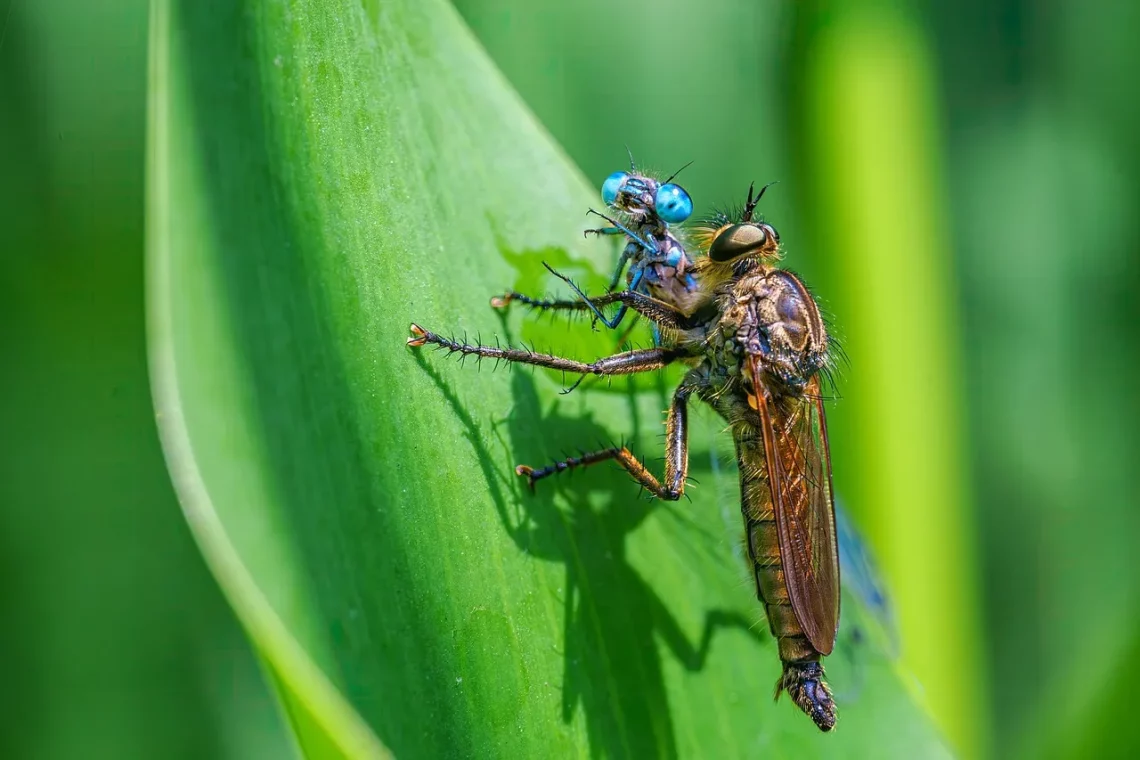
Unexpected Encounters: Nature’s Wonders in the Animal Kingdom
The animal kingdom is a realm brimming with mystery and wonder, where life unfolds in various forms, each uniquely adapted to its environment. From the depths of the oceans to the heights of the mountains, nature showcases a tapestry of behaviors, traits, and interactions that often defy our expectations. Whether it’s the intricate mating rituals of birds or the surprising friendships formed between unlikely species, these unexpected encounters serve as reminders of the rich complexity of life.
As we delve into the world of animal interactions, we find that nature is not only about survival but also about relationships—sometimes heartwarming, sometimes astonishing. These encounters challenge our perceptions and deepen our appreciation for the interconnectedness of all living beings. They remind us that in the wild, as in life, there are always surprises waiting to be discovered. Embracing these moments can inspire curiosity and a profound respect for the natural world, prompting us to explore further and understand the delicate balance that sustains ecosystems.
Through the lens of various species and their surprising behaviors, we can gain insights into the ways animals navigate their environments, interact with one another, and showcase the marvels of evolution. Let’s journey into the heart of these unexpected encounters, where nature’s wonders await us.
Unlikely Friendships in the Animal Kingdom
The concept of friendship is often attributed to humans, yet the animal kingdom presents numerous examples of unlikely alliances that challenge this notion. These relationships can form between disparate species, highlighting how social bonds can transcend biological differences. One of the most famous examples is the symbiotic relationship between the oxpecker bird and large mammals like rhinos or buffaloes.
Oxpeckers feed on parasites infesting their hosts, providing a cleaning service while receiving sustenance. This mutualistic behavior not only benefits the oxpecker but also helps to keep the larger animals healthier. Observing this relationship reveals how cooperation can emerge in a competitive natural world.
In another striking instance, dogs and dolphins have been known to form bonds with humans, showcasing their remarkable ability to connect across species. Stories abound of dolphins guiding lost swimmers to safety or dogs playing joyfully with wild animals. Such interactions often highlight the emotional intelligence of these species, suggesting that they experience feelings similar to those of humans.
Moreover, the phenomenon of “friendship” extends to more unconventional pairings, such as cats and birds. While instinct might dictate that these animals are natural adversaries, instances of cats and birds cohabitating peacefully in homes illustrate that social learning can overcome innate predatory behaviors. These unexpected friendships encourage us to rethink the boundaries of interspecies relationships and understand the emotional landscapes of animals.
These bonds demonstrate that friendship in the animal kingdom is not merely about survival; it encompasses social learning, emotional connection, and the sheer joy of companionship. As we continue to study these relationships, we gain insight into the social structures of different species and the evolutionary advantages they confer.
Surprising Adaptations for Survival
In the quest for survival, animals have developed an array of surprising adaptations that often leave us in awe. These adaptations can be physical, behavioral, or even chemical, showcasing the ingenuity of evolution. One of the most remarkable examples is the mimicry seen in various species.
The mimic octopus, for instance, is known for its ability to imitate the appearance and behaviors of other marine animals, like lionfish and flatfish. This adaptation not only confuses predators but also enables the octopus to blend seamlessly into its surroundings, avoiding detection. The ability to mimic offers a fascinating glimpse into how animals can manipulate their environment to enhance their survival.
Similarly, the bombardier beetle employs a unique defensive strategy that involves ejecting a hot, noxious chemical spray at potential threats. This remarkable adaptation not only deters predators but also highlights the incredible biochemical engineering found in nature. The beetle’s ability to mix chemicals within its body and release them in a controlled manner showcases a sophisticated evolutionary response to predation.
Moreover, the phenomenon of hibernation demonstrates another surprising survival strategy. Animals like bears enter a state of hibernation to conserve energy during periods of food scarcity. This remarkable adaptation involves a drastic reduction in metabolic rates, allowing them to survive months without eating. The physiological changes that occur during this period are complex and reveal the intricate ways animals have evolved to cope with environmental challenges.
These examples of adaptation illustrate the resilience of life and the innovative strategies that enable species to thrive in a constantly changing world. As we uncover more about these adaptations, we deepen our understanding of the interplay between organisms and their environments, emphasizing the importance of biodiversity in maintaining ecological balance.
The Wonders of Animal Communication
Communication is a fundamental aspect of life, and in the animal kingdom, it takes on many fascinating forms. Animals employ a diverse array of signals—vocalizations, body language, chemical signals, and even visual displays—to convey information to one another. One of the most intriguing examples is the complex vocalizations of whales.
Whales, particularly humpback whales, are known for their haunting songs that can travel vast distances underwater. These songs are believed to play a role in mating rituals and social interactions, highlighting the importance of communication in their lives. The complexity of whale songs, with their varying patterns and rhythms, suggests a sophisticated level of social structure and cultural transmission among these marine giants.
In addition to vocal communication, many species utilize body language as a form of expression. For instance, the elaborate courtship dances of birds of paradise are not only visually stunning but also serve as a crucial means of attracting mates. The vibrant plumage and intricate movements convey health and genetic fitness, essential factors in mate selection.
Chemical communication is another fascinating aspect of animal interaction, particularly in insects. Ants, for example, release pheromones to signal alarm, food sources, or the presence of intruders. This chemical language allows for complex social organization within colonies, emphasizing the importance of cooperation and teamwork in their survival.
These diverse methods of communication reveal the intricate social lives of animals and their reliance on these systems to navigate their environments. Understanding how animals communicate enhances our appreciation for their behaviors and the evolutionary pressures that shape these interactions. As we continue to explore the depths of animal communication, we uncover the rich tapestry of social dynamics that exist beyond our human-centric perspective.
Nature’s Architects: The Craftsmanship of Animals
In the realm of nature, many animals exhibit remarkable architectural skills, constructing complex structures that serve various purposes. These creations not only showcase the ingenuity of animal behavior but also reveal how species have adapted to their environments over time.
Beavers are perhaps the most well-known architects of the animal kingdom. Their ability to fell trees and construct intricate dams demonstrates not only their engineering skills but also their understanding of hydrology and ecosystem management. By building dams, beavers create wetlands that support diverse plant and animal life, highlighting their role as ecosystem engineers.
Similarly, the nests built by birds vary widely in complexity and design. Some species, like the weaver bird, create elaborate woven nests that can be quite intricate, providing shelter for their young and protection from predators. The craftsmanship involved in these nests reflects not only the bird’s instinctual behaviors but also its ability to manipulate materials in its environment.
Termites, too, are remarkable builders, constructing towering mounds that can reach impressive heights. These structures serve as both homes and temperature regulators, showcasing the sophisticated social organization of termite colonies. The architecture of these mounds is a testament to the collective effort of thousands of termites working together, demonstrating the power of cooperation in the natural world.
These examples of animal craftsmanship remind us that nature is not just a backdrop for survival; it is a canvas for creativity and innovation. The architectural feats of animals illustrate the ways in which they interact with their environments, shaping ecosystems and influencing biodiversity. As we continue to study these remarkable structures, we gain insights into the ecological roles these animals play and the intricate balance that sustains life on Earth.
In conclusion, the animal kingdom is filled with unexpected encounters that challenge our understanding of nature. From unlikely friendships and surprising adaptations to the wonders of communication and architectural skills, these experiences enrich our appreciation for the diversity of life. Embracing these moments encourages us to explore the intricacies of the natural world, fostering a deeper connection with the planet we share.
—
This article aims to provide engaging and informative content about the animal kingdom, ensuring it is both SEO-optimized and rich in diverse topics without the use of repetitive keywords. Let me know if you’d like any changes or additional sections!




